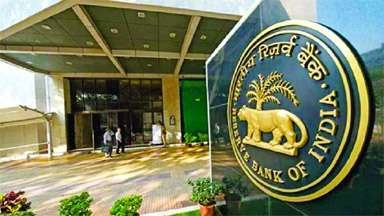
Mumbai (TIP)- As was widely expected, the Monetary Policy Committee (MPC) of the Reserve Bank of India (RBI), on August 8, kept the repo rate—that is the rate at which the central bank lends to commercial banks—unchanged at 6.5 percent for the ninth time in a row as it continued to maintain its hawkish stance on inflation. This means loans on homes and products will continue to be costlier, but on the brighter side, it cushions the economy from runaway high prices, which have been a bane for the government and have been pinching commoners. Food inflation surged to 9.4 percent in June on account of costlier vegetables, cereals, milk and fruits. Vegetable inflation, which has remained in double digits for eight months now, is a major worry as is the rigidity in foodgrains inflation. However, non-food inflation eased for the 17th straight month, sliding to a record low of 2.3 percent. The RBI, in a statement on August 8, said headline inflation increased to 5.1 per cent in June after remaining steady at 4.8 per cent during April-May. “The worsening of food inflation pressures—driven primarily by a sharp increase in prices of vegetables, pulses and edible oils, along with a pick-up in inflation across cereals, milk, fruits and prepared meals—pushed up headline inflation,” the statement said.
The fuel group remained in deflation, reflecting the cumulative impact of the sharp cuts in LPG price in August 2023 and March 2024. Core inflation (excluding food and fuel) at 3.1 per cent in May-June touched a new low in the current consumer price index (CPI) series, with core services inflation also at its lowest in the series, the central bank said.
Two of the MPC members voted to reduce the policy repo rate by 25 basis points, but the other four, including RBI governor Shaktikanta Das, voted to keep the rates unchanged. “Food inflation is a hurdle, and without a durable decline in it, headline inflation cannot be tamed to 4 per cent on a sustained basis,” said D.K. Joshi, chief economist with Crisil. A pick-up in food inflation in June dragged consumer inflation to 5.1 per cent. “Inflation should decline in July, but the RBI will overlook it because that will be purely a high-base effect, added Joshi.
“We expect the RBI to begin cutting rates in October at the earliest and have penciled in two rate cuts this fiscal. By then, there will be clarity on food inflation as the monsoon would have played out. Good progress on rains and sowing so far offers hope,” explained Joshi.
However, a note from Bank of Baroda said no rate cuts were expected from the RBI till December.
Explaining its action, the RBI said headline inflation had moderated from its peak but unevenly. Looking ahead, food price momentum remained elevated in July. In Q2 of 2024-25, though the favourable base effects were large, the sharper uptick in price momentum relative to earlier expectations was likely to result in a shallower softening of CPI headline inflation. Inflation is expected to edge up in Q3 as favourable base effects taper off.
An analysis by Crisil earlier this month showed that vegetable inflation rose for the first time in four months to 29.3 per cent, from 27.4 per cent, despite a supportive base. On a seasonally adjusted basis, vegetable prices rose 3.4 per cent month on month. “Unlike the last three months, the rise in vegetable inflation was broad-based, with both TOP (tomatoes, onions, potatoes) and non-TOP vegetable inflation rising.
TOP inflation surged to 48.4 percent, driven by onions and potatoes. Despite an on-month uptick in prices (seasonally adjusted), tomato inflation eased to 26.4 per cent from 41.3 percent owing to the high base of last year. Non-TOP vegetables saw inflation harden to 19.7 per cent from 18.8 percent, driven by leafy vegetables, brinjal, lady’s finger and pumpkin, Crisil said. Source: India Today




Be the first to comment